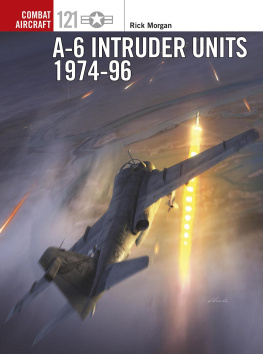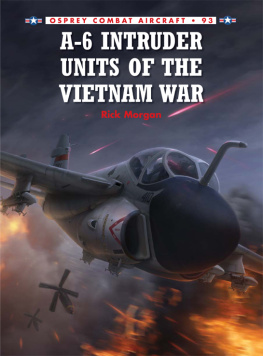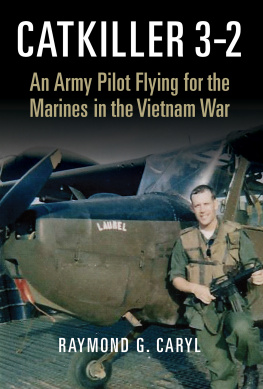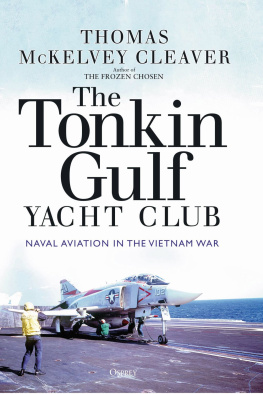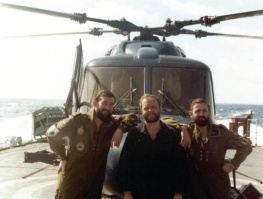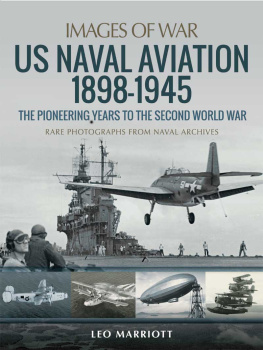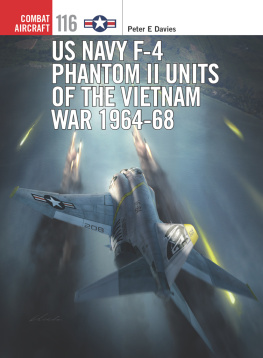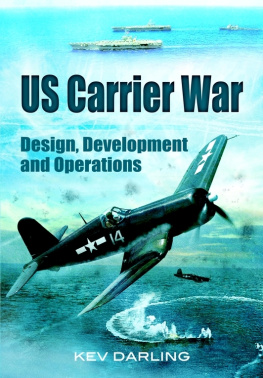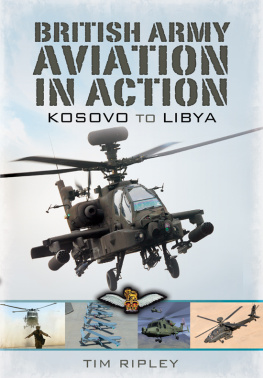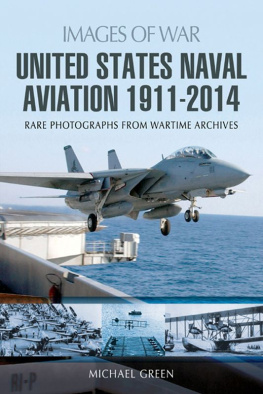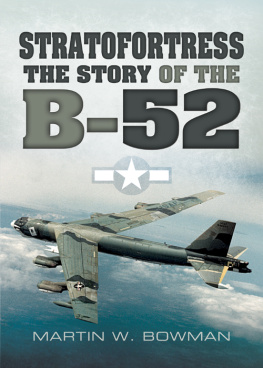INTRODUCTION
All-Weather Attack To conduct all-weather offensive air-to-surface attack operations with conventional and nuclear weapons.
T his sentence, which is out of the annual Naval Aviation Organization document, pretty much sums up the role that Medium (All-Weather) Attack had within the US Navy. Between the end of the Vietnam War and Medium Attacks last breaths in 1996 the Intruder truly led the way for Naval Aviation.
Within the community, the crew, Naval Aviators and Naval Flight Officer (NFOs), fiercely believed, no matter what the fighter guys would tell you, that they represented the true elite of Naval Aviation. They thought that they could get their aircraft in to any target in any weather and deliver the goods. Everyone else outside the attack community (particularly the fighters) were support platforms as far as they were concerned, and their buddies flying A-7s were little brothers at best. Even after the motion picture Top Gun came out, the brotherhood of Medium Attack responded with the retort Fighter Pukes Make Movies. Attack Crew Make History, which became a bumper sticker widely seen on cars at both Naval Air Stations Whidbey Island and Oceana home of the Medium Attack community.
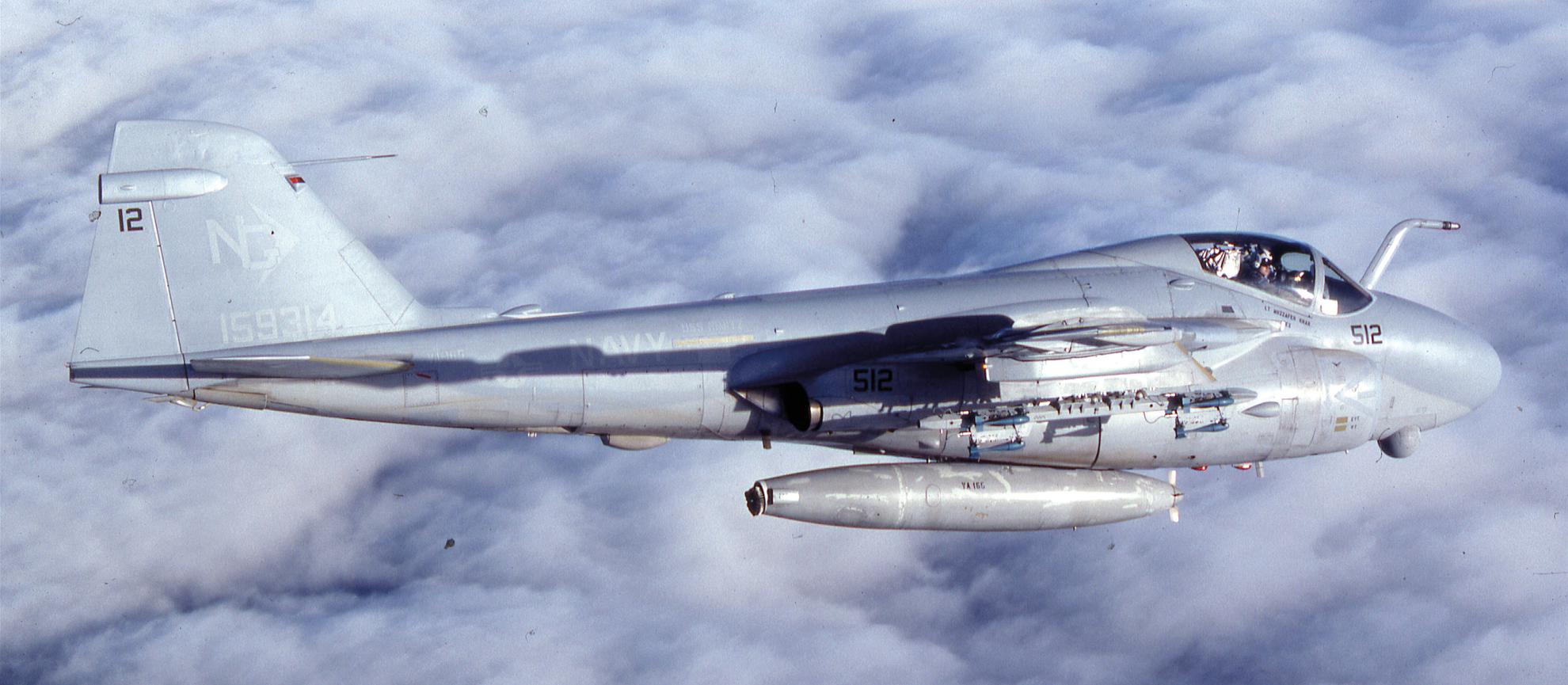
A Boomer A-6E TRAM from VA-165 sails majestically over a cloud deck near its Whidbey Island home on 16 December 1993. NG 512 BuNo 159314 carries Mk 76 practice bombs as well as a buddy store on its centreline. The US Navys Medium Attack community had only about three years left when this photograph was taken (Author)
Between 1974 and 1996 Medium Attack defined the heart of the strike capability that carrier aviation presented. As of 1974 the Intruder was still in production at Grummans plant on eastern Long Island. What makes this point amazing is that, as late as 1968, US Defense Secretary Robert McNamara had reported to the US Congress that the A-6 would end production in 1970. In fact it would continue unabated for another two decades.
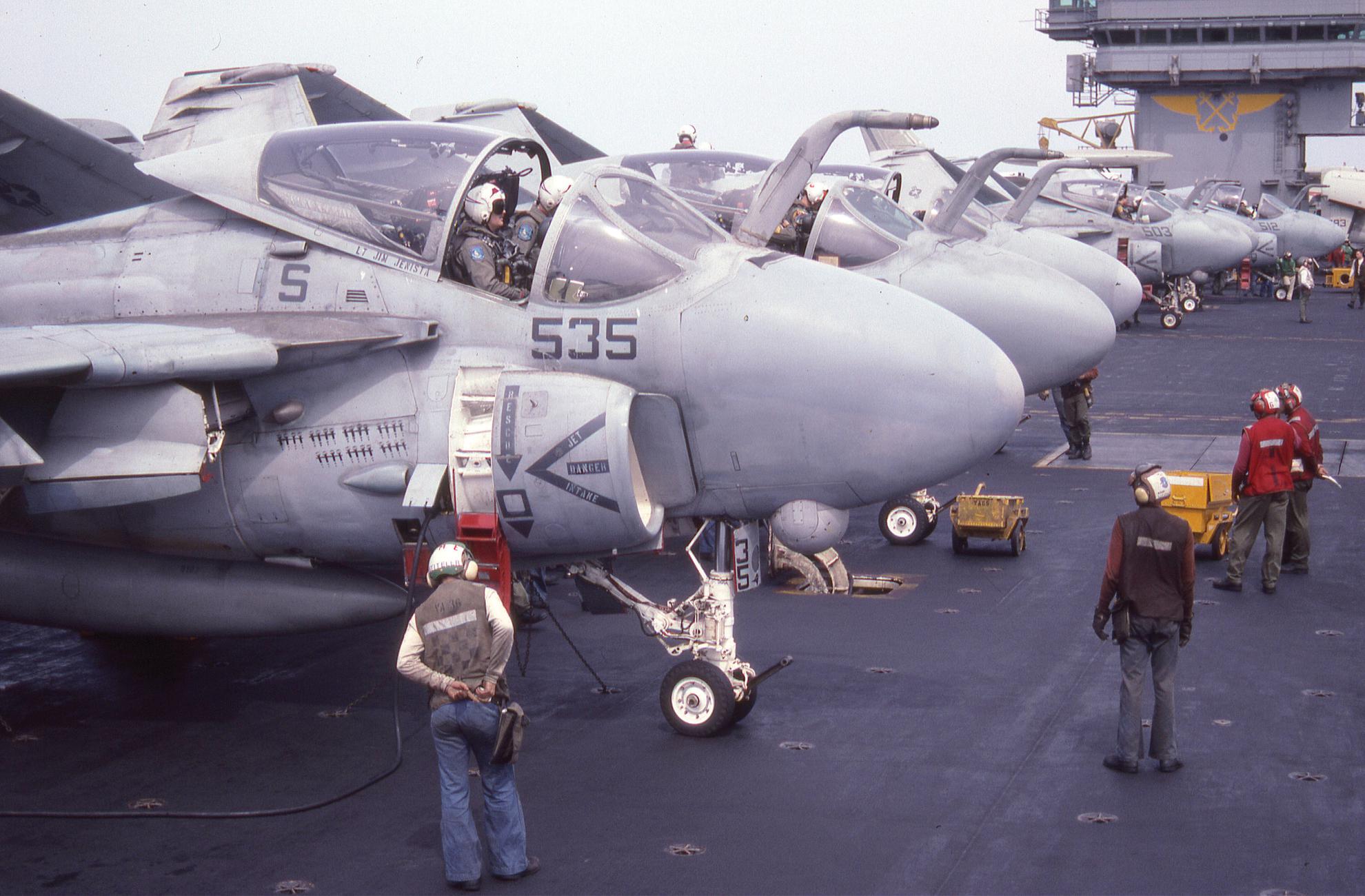
In a scene repeated thousands of times on US Navy carriers over three decades, Intruder crews prepare for launch from Theodore Roosevelt in March 1991 during operations in the Red Sea. AJ 535 BuNo 155703 is from the Roadrunners of VA-36, and it shows mission markings applied to its starboard engine intake during Operation Desert Storm. Two VA-65 aircraft are sandwiched between the VA-36 jets in this view, all six Intruders being manned up. CVW-8 embarked 20 A-6E for this combat cruise, with no KA-6Ds assigned (Author)
Within the US Navy, the number of A-6 squadrons grew from ten in 1974 to an apogee of 16 in 1987, with a pair of Naval Reserve units coming later. The Intruder led the air wings transition from Vietnam-era Alpha Strike tactics to precision bombing that paid off in spades during Operation Desert Storm. Yet, in spite of this performance, the community would be completely dismantled within five years. On a broader stage, the A-6 community provided the leadership for a large part of US Naval Aviation into the next century, and even included the only Secretary of the Navy (SECNAV) with Naval Flight Officer wings. During this same period it also showed the way for NFOs as they proved their worth and rose to higher command.
The end of the Vietnam War led to the US Army and USAF largely going into garrison, even if in places like Korea and Germany. On the other hand, the US Navy was still driven by rigid deployment schedules where squadrons and ships were on a never-ending cycle of work-ups and training prior to leaving CONUS (Continental USA) on a carrier for six, or more, months at a time. US Navy aircrew who had the opportunity to participate in a USAF exercise like Red Flag at Nellis AFB, Nevada, usually viewed the event as a pleasant, short respite from their normal routine, and were typically surprised to hear from some of their Air Force counterparts that the two- to three-week trip to Las Vegas could be the longest they would be away from home in their three-year tour! That all changed for the other services with the commencement of Operation Desert Shield in August 1990 of course, but up until then six-month deployments were viewed as reality within carrier air wings.
Many Navy wives would tell you that the work-ups were harder on the family than the actual cruises because in the year prior to the deployment to the Mediterranean or western Pacific (WestPac) their husbands would be gone for up to half, or more, of the time. During this period they would be either working off the coast from their assigned carrier or conducting training at obscure places like Naval Air Station (NAS) Fallon, Nevada. Time away from the family took its toll. Divorce rates were frequently high it certainly was not easy, and the wives rarely get the credit they are due for their part. The enlisted force dealt with the same issues and, as commonly stated, lived in ships quarters that would be declared unfit for many incarcerated in a jail.
The US Marine Corps A-6 units were in a similar cycle, typically with six-month periods away from home while preparing for or actually deploying to Japan. When they went to the boat they performed in an almost uniformly magnificent fashion, showing their professional abilities as Naval Aviators.
And then there is the EA-6A, which rarely gets the coverage it deserves. While the chapter on the aircraft in this volume is small, I hope I cover its post-Vietnam activities appropriately.
The Intruder has proven to be popular with hobbyists over the years for its varied plumage. The 30 aircraft I have selected for the profile section of this book represent a wide selection of markings without duplicating any we used in Osprey Combat Aircraft 93 A-6 Intruder Units of the Vietnam War. We have tried to show a lot of different ordnance combinations as well as a range of colour schemes, with a mix of combat and peacetime markings. I think that Jim Laurier, once again, has done a tremendous job with his Intruder profiles. He deserves a lot of credit in faithfully taking care of my many comments on his work therefore, any errors found in them should be referred to me and not Jim.
Likewise, I love Gareth Hectors cover work as he, yet again, dramatically depicted an Intruder in combat in its natural night environment.
AUTHORS NOTES
Like my A-3 work (Osprey Combat Aircraft 108 A-3 Skywarrior Units of the Vietnam War), Ive tried to cover three areas in this book the technical, the operational and the personal, because one does not work without the other. I also tend to write in the language of Naval Aviation and do so without apology. This is not the definitive history of the type, but I hope Ive helped explain the A-6s post-Vietnam story in an affordable effort.
The organisation of this book shows the way the Intruder flew for its last 22 years, from Vietnam and the short peace that followed through the busy times that led to Desert Storm and, finally, the end of the entire Medium Attack community.
The men that flew and fixed the mighty Intruder remain my heroes. Heres hoping their sacrifice and accomplishments do not fade away anytime soon.
I wish to acknowledge the support of the following individuals during the writing of this volumes Rear Adm Lyle Bull USN (Ret), Rear Adm Don Quinn USN (Ret), Rear Adm John J R Haley USN (Ret), Capt Lou Lalli USN (Ret), Capt Steve Richmond, USN (Ret), Capt John Scrapper USN (Ret), Capt John Shorck USN (Ret), Cdr Peter Mersky USNR (Ret), Cdr Dick Nelson, USN (Ret), WO3 Chuck Berleman, USN (Ret), Lt Cdr Rick Burgess USN (Ret), Lt Cdr Tim Sparks USN (Ret), Capt Mark Morgan (MOANG, Ret), PHCS Bob Lawson USN (Ret), Steve Bulwicz, Bobby Kennedy, Dave Garvey, Troy Prince, Jim Rotramel, Bruce Trombecky, Michael Grove, Mark Aldrich, Phil Friddell, Frank McBaine and The Tailhook Association.

